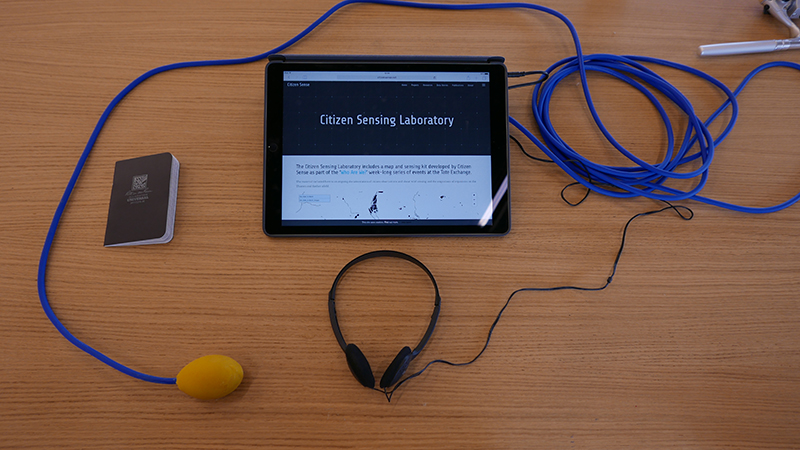The Citizen Sense research project has now launched materials from the urban sensing project area investigation. As part of this launch, a number of research materials are available, including the Deptford Data Stories describing findings from citizen monitoring of air quality in South East London, project videos documenting the participatory research process, and citizen-gathered Dustbox PM2.5 data that is open and available for download at our Airsift data analysis toolkit, which can be used to analyze the citizen data.
More info can be found on the Goldsmiths press release, which is also available here:
South East London pollution far exceeds WHO limit, Goldsmiths research suggests
– Six times WHO limit exceeded on multiple occasions
– Monitoring device used by citizens across SE London
– Road traffic, construction sites, and River Thames traffic potential causes
Pollution levels in South East London reached six times the World Health Organisation (WHO) limit on several occasions during the last year, new research from Goldsmiths, University of London suggests.
Goldsmiths’ ‘Citizen Sense’ research group equipped local residents with their new ‘Dustbox’ device designed to measure the volume of particulate matter 2.5 (PM2.5) in the atmosphere in seven areas of South East London.
PM2.5 refers to tiny particles in the air that are able to travel deep into the respiratory tract and can affect lung function and worsen medical conditions such as asthma and heart disease.
The WHO daily mean concentration guideline of 25 micrograms of PM2.5 per cubic metre of air (µg/m3) was regularly exceeded across Deptford, New Cross and Lewisham, with daily mean concentrations above 150 µg/m3 being registered on multiple occasions between January and April this year.
The research has highlighted a number of likely causes of increasing pollution, with particularly high instances of PM2.5 detected at major traffic intersections, around construction sites for new housing developments, and at locations where drivers often leave engines idling.
Data from the Pepys area of Deptford also indicated the possibility that the primarily diesel-fueled traffic on the River Thames could be causing elevated levels of PM2.5.
Two Dustboxes around 200 metres from the Thames regularly registered a daily mean concentration of PM2.5 over 100 µg/m3 in February 2017.
Professor Jennifer Gabrys said: “There were a number of striking findings from this research, not least the spikes in pollution on certain days and around certain areas. The results suggest that rapid urban regeneration, ever growing volumes of vehicles, and traffic idling are becoming increasingly harmful to London’s atmosphere and its population. We were also drawn to findings that suggested pollution could be coming from River Thames traffic, which raises questions about how we manage that as a city.
“All citizens who took part in this research did so because they are concerned about the rising levels of pollution in their city, and want to use evidence to support projects to improve the urban realm. One of our other surprising findings is that green spaces, if well planted, can make a significant contribution to improving local air quality. We hope that the main takeaway from this research will be that urban design can play a big role in preventing and mitigating air pollution. Our hope is that the monitoring toolkit and data stories will provide a method and guide for others to contribute to the wider development of citizen-led environmental monitoring to support and build more liveable cities.”
The Dustbox was developed at Goldsmiths by the Citizen Sense research group. It includes a sensor for detecting PM2.5, a microcomputer, and WiFi connectivity so data can be uploaded and analysed in real time.
Citizen Sense carried out similar research in the US from 2014 to 2016. This application of monitoring technology in the UK has been carried out by Citizen Sense team members Professor Jennifer Gabrys, Helen Pritchard and Dr Lara Houston.







